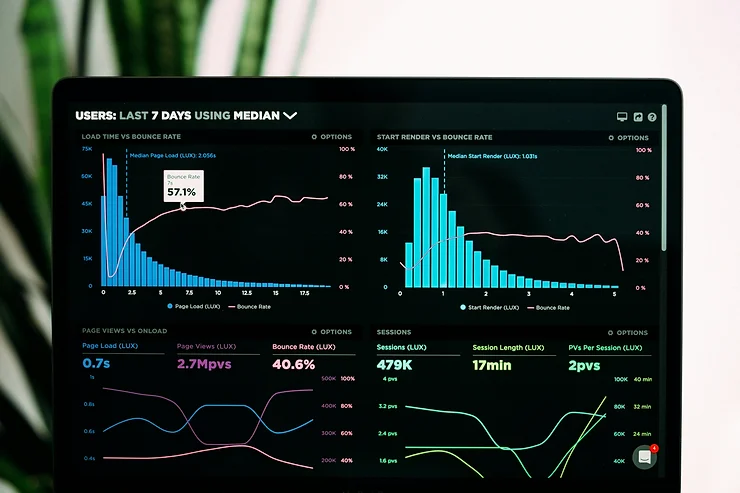Introduction
Business Intelligence (BI) projects are instrumental in transforming data into actionable insights that help businesses stay competitive. Companies across industries are leveraging BI to make more informed decisions, improve operational efficiency, and gain a better understanding of their customers. However, despite the growing reliance on BI tools and technologies, managing BI initiatives successfully remains a challenge. Issues such as scope creep, stakeholder misalignment, and technical complexities frequently cause delays and budget overruns, which can derail even the best-planned projects.
To help ensure that your BI initiatives are delivered on time and within budget, it’s crucial to adopt a structured approach to project management. This blog will provide five essential tips to keep your BI projects on track, ensuring that you get the most out of your investment in data-driven decision-making.
Challenges in BI Projects
Business Intelligence projects are unlike traditional IT projects in several ways. They require close collaboration between technical and business teams, involve the integration of diverse data sources, and often have to accommodate evolving business requirements. Let’s take a closer look at some of the most common challenges that arise during BI projects:
-
Scope creep: BI projects tend to suffer from scope creep more than other types of initiatives. New requirements often emerge as the project progresses, especially when stakeholders realize the full potential of BI tools. While adding features may enhance the final product, it often comes at the cost of delays and budget increases.
-
Stakeholder misalignment: BI projects require buy-in from multiple stakeholders, including business leaders, data analysts, and IT teams. If these stakeholders are not aligned in their goals and expectations, it can result in miscommunication, rework, and delays. Furthermore, when business users and technical teams have different priorities, it can create friction that affects the entire project.
-
Technical complexities: BI initiatives often involve working with large volumes of data from multiple sources. Data quality issues, the complexity of data integration, and ensuring that the BI platform can scale to handle increasing data loads are all technical challenges that can slow down progress.
-
Data governance and security concerns: Data is a critical asset, and ensuring its accuracy, privacy, and security is a top priority in BI projects. Implementing appropriate data governance policies can add complexity, but it is essential to maintaining trust in the system and avoiding costly data breaches.
-
Evolving business needs: As businesses grow and their strategies shift, the goals of BI projects may also change. This can require mid-project adjustments that introduce additional delays or necessitate budget increases. Without the ability to adapt quickly to these changes, BI projects risk becoming obsolete before they are even completed.
Given these challenges, it’s clear that proper planning, communication, and flexibility are critical to the success of BI initiatives. With that in mind, let’s dive into five practical tips to keep your BI projects on time and under budget.
1. Defining Project Scope Clearly
One of the most significant challenges in BI project management is managing scope creep. BI projects often start with a broad set of objectives, and as stakeholders begin to see the possibilities, they may request additional features or functionalities. Without a well-defined scope, these new requests can lead to project delays and inflated costs.
Why is a clear scope essential?
A well-defined project scope serves as the foundation for the entire project. It outlines the objectives, deliverables, timelines, and boundaries of the initiative. Without a clear scope, teams can easily lose sight of the project’s original goals and spend time working on low-priority tasks that don’t align with business objectives.
Here are a few tips for defining a project scope that will help keep your BI initiative on track:
-
Identify key business objectives: The first step in defining the project scope is to identify the primary business objectives that the BI project is intended to achieve. For example, is the goal to improve sales reporting, enhance customer insights, or optimize supply chain performance? Be as specific as possible about the problem the project is trying to solve.
-
Limit the number of deliverables: While it may be tempting to include a long list of deliverables, it’s better to start with a narrow focus. For instance, rather than trying to build a comprehensive BI platform right away, begin by focusing on a specific department, such as sales or marketing. You can always expand the scope later once the core functionality is in place.
-
Define what is out of scope: It’s equally important to define what is not part of the project scope. This will help prevent stakeholders from adding new requirements mid-project. For example, if your BI project is focused on financial reporting, specify that it won’t include HR analytics at this stage.
-
Break the project into phases: BI projects can be complex, so it’s often helpful to break them into smaller, more manageable phases. Start with the highest-priority tasks and deliver incremental value throughout the project. This not only keeps the project on track but also allows you to show progress to stakeholders along the way.
By clearly defining the scope at the outset, you can prevent unnecessary delays and keep the project budget under control.
2. Engaging Stakeholders Early
One of the key factors in the success of any BI project is early and consistent stakeholder engagement. Too often, BI projects are treated as IT initiatives, with business stakeholders only becoming involved late in the process. This can lead to misaligned expectations, dissatisfaction with the final product, and costly rework.
Benefits of Early Stakeholder Involvement
When stakeholders are engaged early in the project, they can help define the project’s goals and ensure that the BI solution meets the business’s needs. This early involvement provides several benefits:
-
Clear expectations: Early stakeholder involvement ensures that there is a clear understanding of the project’s objectives, timelines, and deliverables. This reduces the risk of misunderstandings and helps align everyone’s expectations from the start.
-
Improved buy-in: When stakeholders are involved in the planning process, they are more likely to support the project and champion it within the organization. This can help ensure that the BI solution is adopted more readily once it is implemented.
-
Reduced resistance to change: BI projects often introduce new tools and processes, which can be met with resistance from employees who are accustomed to the old way of doing things. Involving stakeholders early helps them understand the value of the project and prepares them for the changes to come.
-
Faster decision-making: BI projects often require input from various departments, such as finance, marketing, and operations. Engaging stakeholders early ensures that these departments are on board with the project’s goals, which can speed up decision-making and reduce delays caused by internal disagreements.
How to Engage Stakeholders Effectively
To engage stakeholders effectively, you should involve them in the project from the very beginning and keep them informed throughout the project’s lifecycle. Here are some practical steps:
-
Invite stakeholders to initial planning sessions: At the beginning of the project, invite key stakeholders to participate in the planning process. This ensures that their needs are considered when defining the project scope and objectives.
-
Provide regular updates: Schedule regular meetings to keep stakeholders informed of the project’s progress. These updates can include progress reports, demonstrations of completed work, and discussions about any challenges or risks that have arisen.
-
Solicit feedback: Actively seek feedback from stakeholders at various stages of the project. This helps ensure that the BI solution continues to meet their needs as the project evolves.
By engaging stakeholders early and often, you can avoid costly misalignments and ensure that the BI project delivers real value to the business.
3. Using Agile Methodologies
Given the complexity and evolving nature of BI projects, traditional project management approaches may not always be the best fit. Agile methodologies offer a more flexible and iterative approach that can help teams adapt to changing requirements and deliver value more quickly.
Why Agile Works for BI Projects
Agile methodologies, originally developed for software development, have been widely adopted for managing BI projects due to their ability to handle complexity and change. Here are some key benefits of using Agile in BI initiatives:
-
Frequent iterations: Agile teams work in short development cycles, known as sprints, where they deliver small, functional components of the project. This iterative approach allows teams to respond quickly to changes in business requirements and ensures that the BI solution continues to meet the organization’s evolving needs.
-
Prioritizing features: In Agile, teams work closely with stakeholders to prioritize the most critical features and deliver them first. This ensures that the most valuable components of the BI solution are delivered early in the project, reducing the risk of delay.
-
Increased collaboration: Agile emphasizes collaboration between cross-functional teams, including business stakeholders, developers, and data analysts. This collaboration ensures that the BI solution is aligned with business needs and reduces the risk of miscommunication.
-
Continuous feedback: Agile methodologies involve continuous feedback loops, allowing stakeholders to provide input at regular intervals. This helps ensure that the project remains on track and any issues are addressed before they become major problems.
Implementing Agile in BI Projects
To implement Agile successfully in BI projects, teams should follow these best practices:
-
Start with small, manageable sprints: Break the project down into smaller sprints, each with a specific deliverable. This allows the team to focus on one task at a time and deliver value incrementally.
-
Hold regular sprint reviews: At the end of each sprint, hold a review meeting where the team demonstrates what has been accomplished and solicits feedback from stakeholders. This ensures that the project stays aligned with business needs.
-
Adjust based on feedback: Be prepared to make adjustments to the project plan based on stakeholder feedback. Agile is designed to be flexible, so embrace the opportunity to refine the BI solution as the project progresses.
Using Agile methodologies helps BI teams remain flexible and adaptive, which is critical for delivering projects on time and within budget.
4. Prioritizing Data Quality
Data quality is the foundation of any successful BI project. Poor-quality data can lead to inaccurate insights, which can in turn result in bad business decisions. Data cleansing and validation should be a top priority to ensure that the data used in the BI solution is accurate, consistent, and reliable.
Why Data Quality Matters
-
Accurate decision-making: The goal of BI is to provide accurate insights that support informed decision-making. If the data is incomplete, outdated, or incorrect, the resulting reports and dashboards will be unreliable.
-
Increased trust in BI systems: Stakeholders need to trust the data being presented to them. If they encounter errors or discrepancies, they may lose confidence in the BI system and be reluctant to use it.
-
Reduced rework: Addressing data quality issues early in the project reduces the need for costly rework later on. It also helps ensure that the BI solution remains scalable as more data sources are integrated over time.
Steps to Improve Data Quality
To improve data quality in your BI project, follow these steps:
-
Conduct a data audit: Before the project begins, conduct a data audit to identify any data quality issues, such as missing values, duplicates, or inconsistencies.
-
Implement data cleansing processes: Use data cleansing tools to clean and standardize the data before it is loaded into the BI system. This may involve removing duplicates, correcting errors, and filling in missing values.
-
Establish data governance policies: Implement data governance policies to ensure that data quality is maintained throughout the project. This includes defining data ownership, establishing data quality standards, and implementing data validation checks.
-
Monitor data quality continuously: Data quality is not a one-time task; it requires ongoing monitoring to ensure that new data being added to the system meets the required standards.
By prioritizing data quality from the outset, you can ensure that your BI solution delivers accurate and reliable insights that drive better business outcomes.
Conclusion
Managing Business Intelligence initiatives on time and under budget requires a careful balance of planning, flexibility, and stakeholder engagement. By defining a clear project scope, involving stakeholders early, adopting Agile methodologies, prioritizing data quality, and managing risks, you can set your BI project up for success. Implementing these best practices will help you deliver a BI solution that meets the needs of your organization and provides the insights needed to drive better decision-making.










